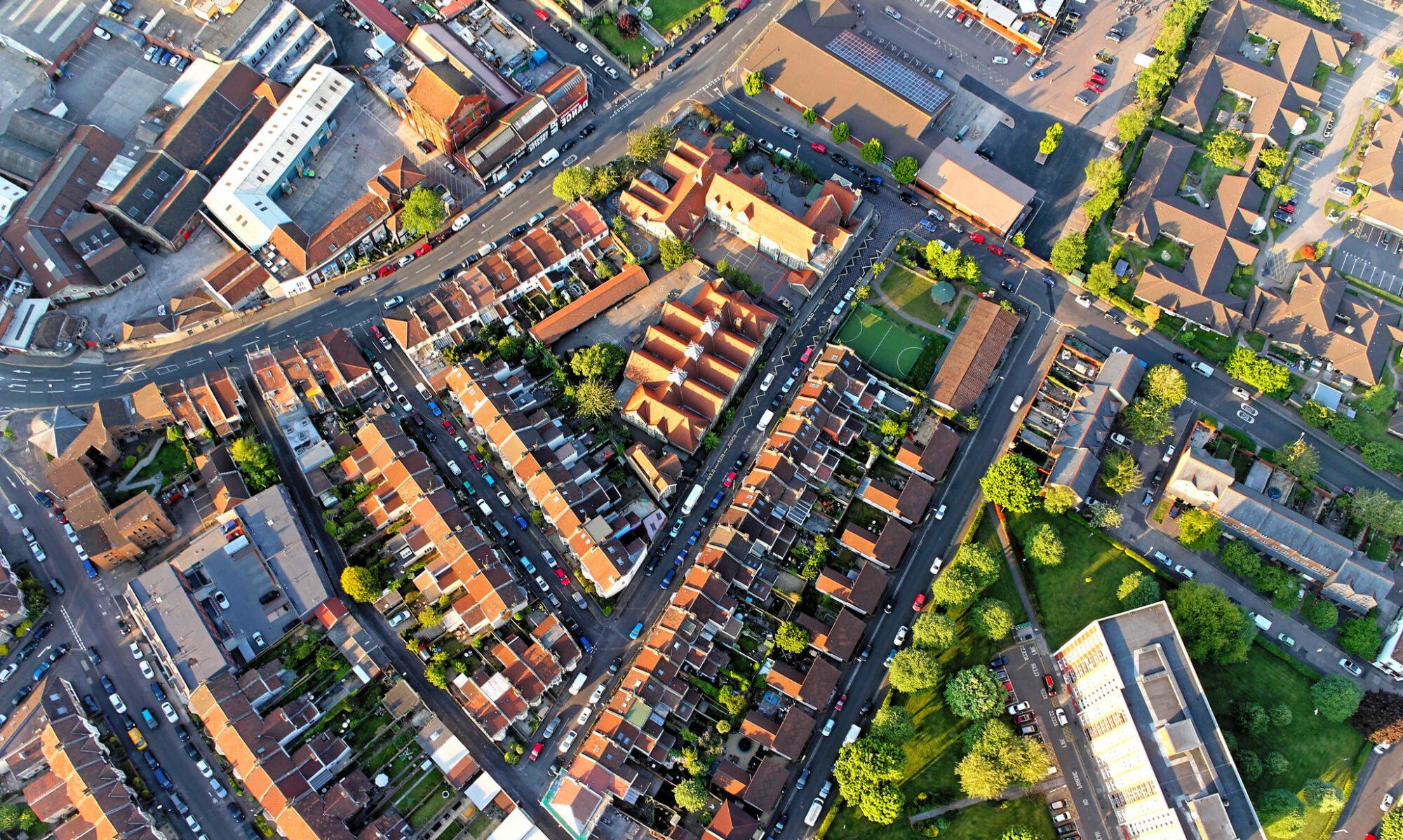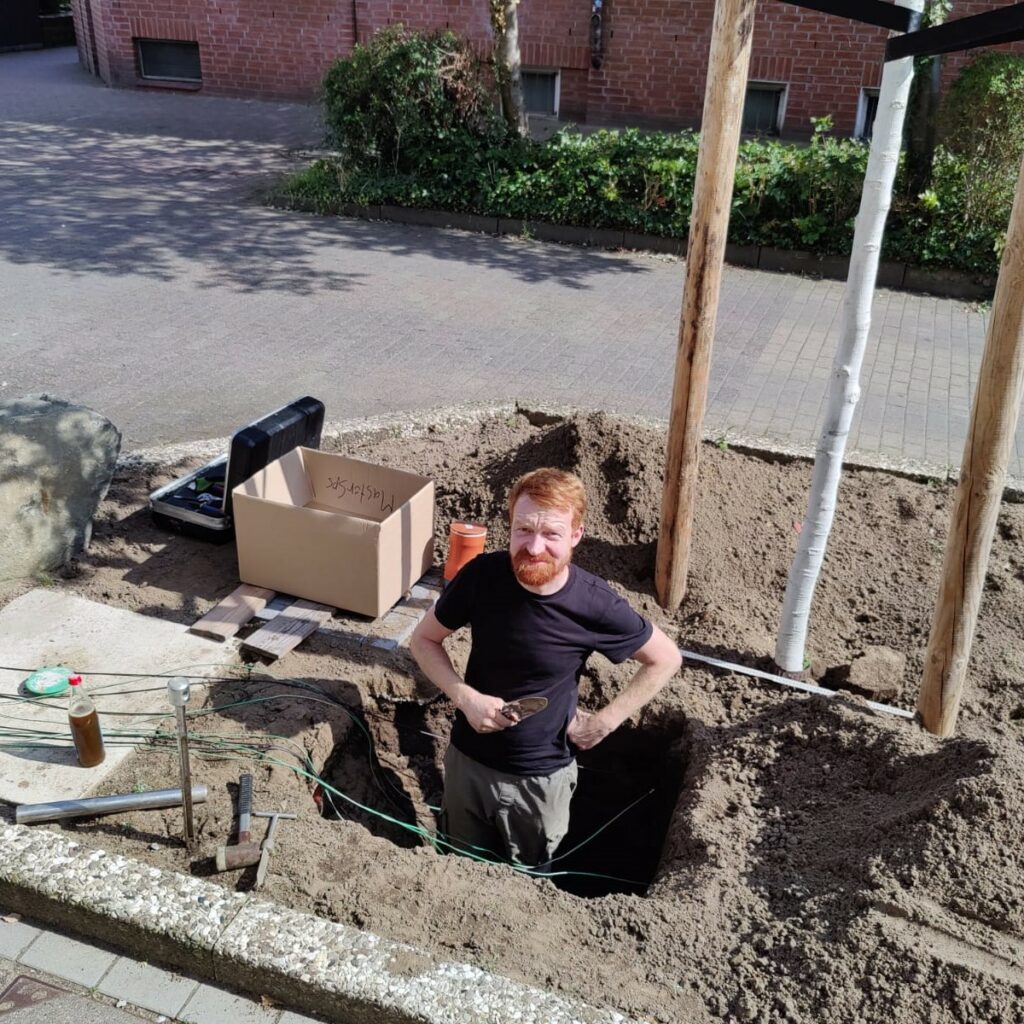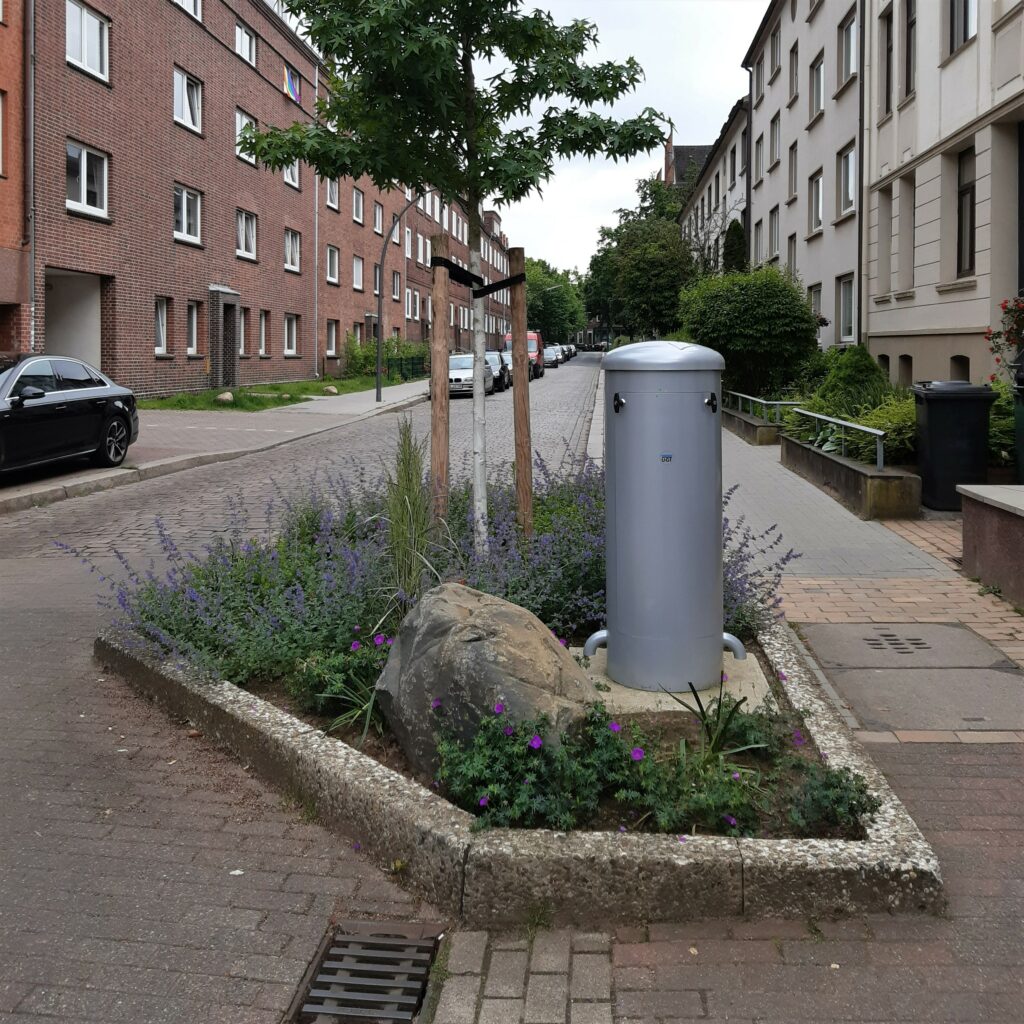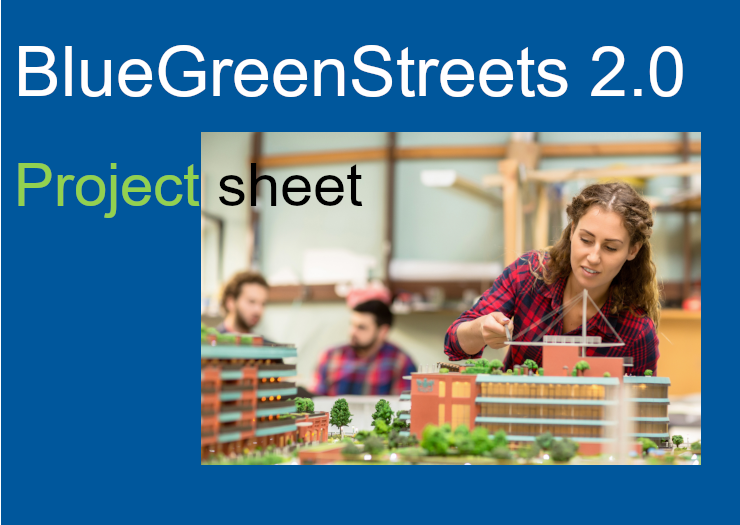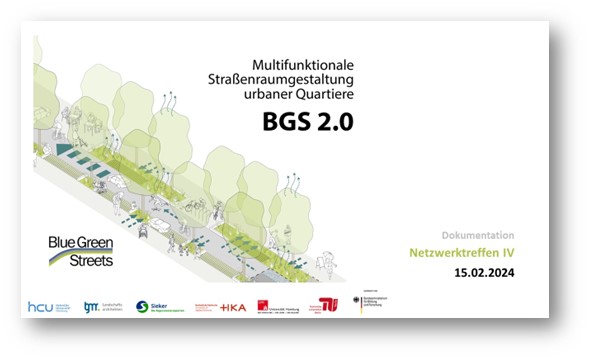BGS 2.0 – BlueGreenStreets 2.0 – implement, evaluate and consolidate
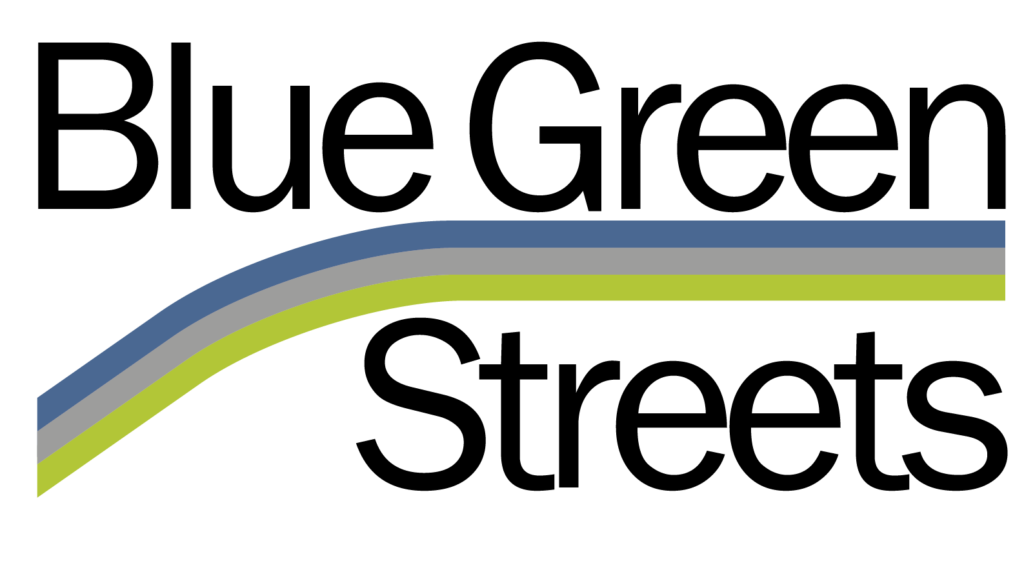
The BlueGreenStreets 2.0 project implements, evaluates and consolidates research results on climate change adaptation in urban spaces. In addition to the establishment of municipal and research-oriented networks and the direct exchange of expertise with associations, planning and engineering offices and municipalities, stormwater tree pits are being further developed as a BGS measure. The BGS toolbox, which is already actively in use, is being tested in practice and then supplemented with new knowledge so that the implementation of blue-green spaces can be realized by a large number of municipalities.
Prospective urban planning: the water sensitive design of cities
Green spaces and open water areas within cities are not only of great importance for quality of life, but also for the microclimate within neighborhoods. In growing cities, because of soil sealing, there is an increasing risk of losing green spaces and simultaneously an increase in the risk of urban flooding. The task of future urban development is therefore not only to develop different land uses side by side, but also to combine them. Urban greenery and urban flood protection need to be integrated into multifunctional streetscapes.
Multicoded strategies for climate change adaptation in urban spaces
In the first funding phase, the group’s research concentrated on multicoded strategies for climate change adaptation in urban areas. Various BGS measures were analyzed using an innovative evaluation system. The results of the first phase of the BlueGreenStreets project were compiled in a comprehensive planning aid for municipalities and planning offices, which promotes the transfer of knowledge and the practical implementation of blue-green infrastructure in the street space. Within the framework of design workshops, exemplary plans with BGS elements could be worked out in various street areas of the pilot cities.
Optimization and application of the BGS-strategy and toolbox in practice
After the successful planning of climate adaptive rebuilding and development of existing urban spaces in the first phase of the project, the developed tools will be applied and optimized in practice in the consolidation phase during BGS 2.0. The pilot cities Lübeck and Potsdam will incorporate the learnings from the BGS toolbox into their current urban development projects to test its practicability. A further focus of the second phase of BGS are stormwater tree pits, for which the aspects of pollutant accumulation, tree vitality and the allocation of tasks and financing during operation and maintenance will be of interest.
To promote resource efficiency in growing neighborhoods, planning tools acquired during the first project phase will be further developed and their prevalence in urban development projects increased. The BGS toolbox is updated and the network of practitioners expanded.
Project title
BlueGreenStreets 2.0 –
Implement, evaluate and consolidate
Internet
BlueGreenStreets 2.0
Duration
01.09.2022–31.08.2024
Funding code
033W103AN
Contact
Prof. Wolfgang Dickhaut
HafenCity Universität Hamburg
+ 49 40 42827-5095
wolfgang.dickhaut@hcu-hamburg.de
Project partners
HafenCity Universität Hamburg
Universität Hamburg
bgmr Landschaftsarchitekten GmbH
Ingenieurgesellschaft Prof. Dr. Sieker mbH
Hochschule Karlsruhe – Technik und Wirtschaft
Technische Universität Berlin
Version of
Mai 2023
Information on the first funding phase (2019 – 2022) can be found here
Results
Results of the second funding phase
Documentation: BGS-Netzwerktreffen zur „Kombination von Regenwasserbewirtschaftung und Baumstandorten“ am 15.02.2024
Results of the first funding phase
Results of 2019 – 2022 –
Contribution to the publication of the results of the first funding phase Anpassungen an den Klimawandel im Straßenraum sind notwendig und möglich
Results of 2021 – Contribution to the RES:Z-Newsletter 3: BlueGreenStreets – das Thema im Trend
Results of 2020 – Contribution to the RES:Z-Newsletter 2: Bundespreis Stadtgrün, Broschüre Pilotprojekt Friedrichshain
Results of 2019 – Contribution to the RES:Z-Newsletter 1: BlueGreenStreets nimmt Gestalt an
Publications
Kluge, B.; Pallasch, M.; Geisler, D.; Hübner, S. (2022): Straßenbäume und dezentrale Versickerung als Beitrag wassersensibler Stadtentwicklung – Teil 1. KA: Korrespondenz Abwasser, Abfall, 69 (5), S. 358–377.
Pallasch, M.; Geisler, D.; Kluge, B. (2022): Straßenbäume und dezentrale Versickerung als Beitrag wassersensibler Stadtentwicklung – Teil 2. KA: Korrespondenz Abwasser, Abfall, 69 (9), S. 747–759.
Eckart Jochen, Fesser Jonas (2021) Notwasserwege für die Klimaanpassung, Die temporäre Rückhaltung und Notableitung von Starkniederschlägen im Straßenraum, in TRANSFORMING CITIES 4/2021, S. 30-33 (in Print)
Fesser, Jonas; Eckart, Jochen (2021): Temporäre Rückhaltung und Notableitung von Starkniederschlägen auf städtischen Straßen – Rahmenbedingungen hinsichtlich der Verkehrssicherheit; September 2021, 2. Kolloquium Straßenbau in der Praxis Heft 1, pp 191-200
https://elibrary.narr.digital/article/99.125005/kstr202110191
Paton, E.; Vogel, J.; Kluge, B.; Nehls, T. (2021) Ausmaß, Trends und Extrema von Dürren in der Stadt. Hydrologie & Wasserbewirtschaftung, 65 (1), 5-16. (link)
Richter, M. (2021) Straßenbäume als zukunftsfähige Multitalente – BlueGreenStreets optimiert das urbane Regenwassermanagement und die Vitalität von Straßenbäumen durch multifunktionale Straßenraumgestaltung. Conference paper, Aqua Urbanica 2021, 13.-14.09. in Innsbruck. (link)
Richter, M.; Dickhaut, W.; Eschenbach, A.; Knoop, L.; Pallasch, M.; Voß, T. (2021) Können Straßenbaumstandorte durch Regenwasserbewirtschaftung verbessert werden? ProBaum, 1, 22-26. (link)
Wessolek, G.; Kluge, B. (2021) Predicting Water Supply and Evapotranspiration of Street Trees Using Hydro-Pedo-Transfer Functions (HPTFs). Forests, 12(8), 1010. (link)
Zwernemann, Philip; Stöckner, Markus; Eckart, Jochen (2021): Transdisziplinäre Standortfindung zur Sanierung multicodierter Straßenräume September 2021, 2. Kolloquium Straßenbau in der Praxis Heft 1, pp 451-455
https://elibrary.narr.digital/article/99.125005/kstr202110451
Becker, Carlo W. (2020) Zehn Jahre Multicodierung. Garten + Landschaft, Heft 5/2020.
https://issuu.com/callwey/docs/gala_05_20_gesamt
Dickhaut W., Richter M. (2020) Decentralized Stormwater Management: Experiences with Various Measures in Germany. In: Wang F., Prominski M. (eds) Water-Related Urbanization and Locality. Springer, Singapore. (link)
Hübner, Sven & Flamm, Lena (2020) Urbane Multitalente. Garten + Landschaft, Heft 5/2020.
https://issuu.com/callwey/docs/gala_05_20_gesamt
Richter, M.; Dickhaut, W.; Eckart, J.; Knoop, L.; Voß, T. (2020): Projekt BlueGreenStreets – Erhöhung der Ressourceneffizienz urbaner Quartiere durch multifunktionale Straßenraumgestaltung. Transforming Cities, 4(1): 64-69. (link)
